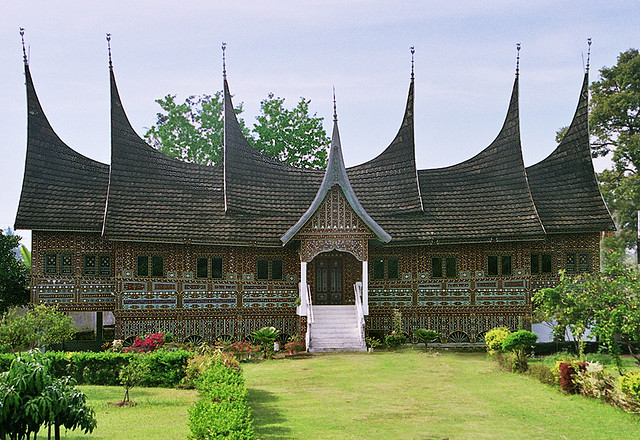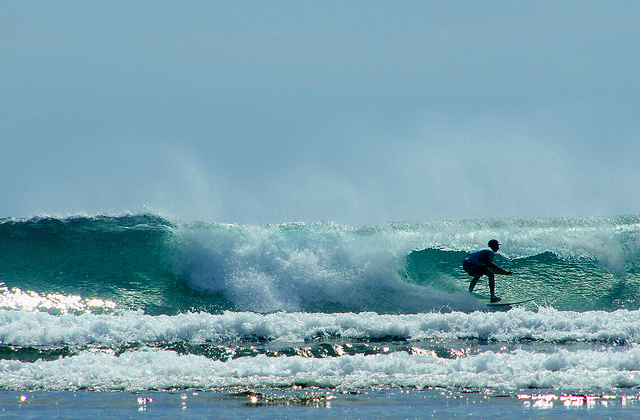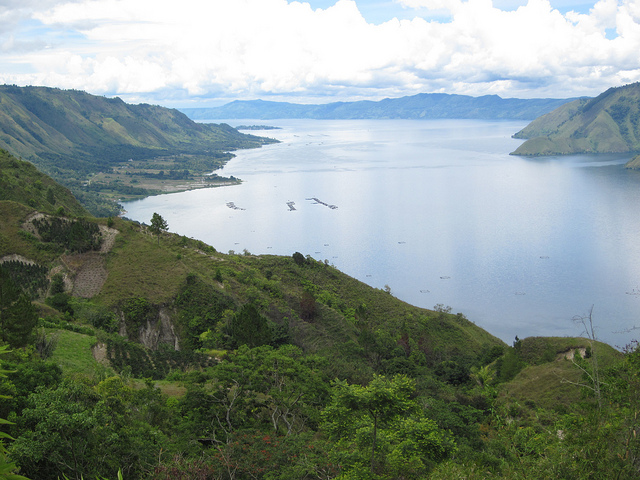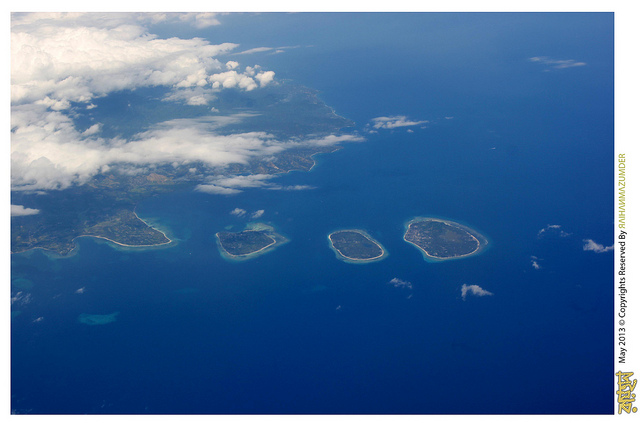Diversity is spelled I-N-D-O-N-E-S-I-A. In terms of island count, Indonesia is made up of a staggering 17,508 islands, although some estimates put it at 20,000. There are at least 300 distinct ethnic groups speaking 742 languages and dialects spread out over 5,000 kilometers of mostly under-touristed territory straddling the equator.
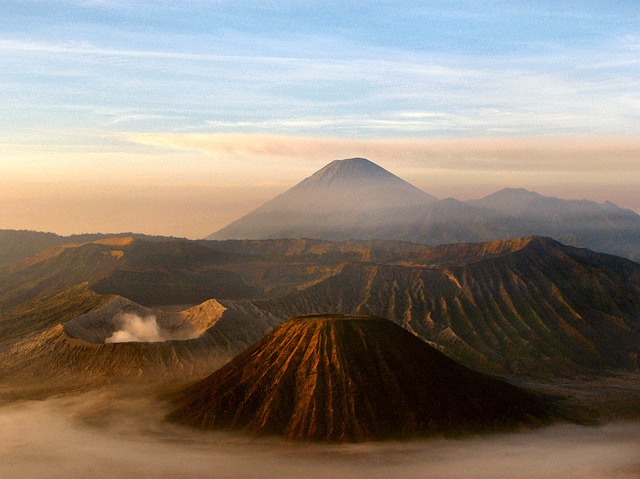
Famous as the Dutch East Indies in 18th century, Indonesia attracts travelers today in the same way it beckoned merchant ships braving the open ocean in search of valuable spices. Although there are clear favorites that leave travelers yearning for more, there are legions of islands and remote corners that beg exploration. Not surprisingly, Indonesia is often depicted as the last frontier of adventure and discovery, overloading the senses with the sublime and mundane, and every little thing in between.
When to Go to Indonesia
Indonesia makes it easy for the traveler to decide when to visit the country. As an equatorial destination, it has only wet and dry seasons. Rains start coming down in October and increase in intensity through April, while the weather turns nicer and hotter starting May and becomes relentlessly hot until September.
There are regional variations in these two seasons: Some parts of Indonesia are only hotter during the summer and less so during the rainy season, whereas others experience marked difference in dry and wet by the occurrences of drought and flooding, respectively.
The wet season in Indonesia should not deter an eager traveler, but they should be advised that rains can fall non-stop during this period, and this makes back roads impassable if not altogether flooded. Airline and ferry schedules are often subject to cancellations or postponement during the wet season, so flexibility is key when traveling to Indonesia during the rainy months.
Getting to Indonesia
The main entry points to Indonesia are in Jakarta, the country’s capital, and Denpasar, Bali’s capital. Both gateways receive and dispatch international flights daily, and hosts domestic flights to and from busy corners of the country. Sumatra, Java, Lesser Sunda and Sulawesi are major islands with connecting flights to other regional hubs like Singapore, Kuala Lumpur, Bangkok and other Southeast Asian capitals. Along with Maluku and Papua, these provinces are also major airline hubs of domestic flights.
By land, Indonesia can be accessed from the Malaysian town of Tebedu in Sarawak through the West Kalimantan town of Entikong.
By sea, dozens of crossings are scattered across the Sumatra-Peninsular Malaysia border, East Kalimantan-Sabah, and Straits of Singapore and Riau Islands.
Getting Around in Indonesia
Being a widely scattered archipelagic country, Indonesia has a legion of marine vessels that are indispensable to mobility. Sumatra, Java, Bali, Nusa Tenggara and Sulawesi are all interconnected by a nautical highway serviced by both government-run and privately operated marine vessels plying the routes daily or several times a week. Ferry schedules in Indonesia, however, have a reputation for being cancelled or rescheduled at the last minute (especially during the wet season), so flexibility and patience are required along with important travel documents.
Airlines are also getting their fair share of domestic passengers who want to skip the discomfort of long rickety rides and inconvenience of delayed ferries. But even they are not immune to last-minute postponements or cancellations. Nonetheless, airlines offer competitive advantages over ferries, especially now that there is an increasing volume of flights to and from major regional hubs.
Provincially, you can get around using buses and trams, particularly in Java, Sumatra and Bali. Trains are comfortable means of transport and only exclusive in Java and Sumatra. Within the cities, particularly in Jakarta, taxicabs are another comfortable option, although buses are far cheaper if a traveler does not mind squeezing in with all other (local) passengers and endure the slow-going and bumpy ride that it is characteristic of Indonesian public transport.
Locally, you can get around Jakarta on “bajaj”, the Indonesian equivalent of Thai “tuktuk” and Filipino tricycle. “Angkutan kota” (known as “mikrolet” in Sulawesi) are blue minivans that seat up to 8 passengers and ply fixed routes. Commuter trains also connect Jakarta to Bekasi and Bogor, and from Bogor to Jatinegara. From there, the railway fans out to Tanah Abang, Serpong, Duri and Tangerang.
In other major cities, other popular transport includes “becak” or bicycle rickshaws with the passengers out front and the driver at the back. It is a rough equivalent of the Filipino “padyak”, except that the driver sits on the left side of the passengers. Becaks, however, are not allowed to ply the main streets, but are excellent transport for back streets in paved roads.
“Dokar” are horse-drawn two-wheeled carts that are widely used all over the country. They are often bedecked with bells and colorful motifs. A “dokar” seats three to four passengers on benches arranged on either side, but expect that they can be crammed with families along with their personal effects to maximize fare.
Chartering “dokar” and “becak” for getting around anywhere locally can be done reasonably if you negotiate before you board the conveyances.
In Java, a larger version of “dokar” called “dilman” carries up to six passengers, while in northern Sulawesi, the two-passenger version of “dokar” called “bendi” is handy in narrow streets and short distances. “Mikrolet” is another favored means of transport in Sulawesi, a minibus that seats two passengers next to the driver and seven on the back facing forward.
“Ojeks” are another (rough) way to get around town especially on impossible (or impassable) roads. These are motorcycle conveyances that you can flag down in bus terminals, markets and busy junctions.
Bicycles, while very eco-conscious and extremely healthy to getting around than plain walking, are best ridden in compact regions like Bali. Elsewhere, bicycles are not (human) energy-efficient and time-saving way to go because of the sheer distance of getting from one point to another. But if coupled with train or bus and even ferry rides, bicycles are nifty conveyances that could get a traveler anywhere.
Driving your own vehicle in Indonesia can be a scary experience if you are not used to jaywalking pedestrians, ox carts on the roads, daring drivers, vehicle parking on narrow shoulders, and driving on the left side.
Accommodations in Indonesia
As a whole, the price range, quality and quantity of accommodation in Indonesia are influenced by the number of tourists that visit the area. The highly touristed the area, the cheaper, more plentiful and better the accommodations, while the less touristed it is, the fewer and more expensive the accommodations. Hence, Bali offers a plethora of lodging that caters to budgets of all types, whereas under-touristed areas typically offer basic to mid-range accommodation that end up more expensive when compared with Bali’s.
Where to Go in Indonesia
The sheer immensity of the archipelago makes it difficult to whittle down the list to a short one, but here are some of the best places in Indonesia to get started.
– Bali
The mere mention of Bali conjures a tranquil rural paradise surrounded by magnificent natural endowments that seem to have been heaped in one place, making other destinations inadequate in comparison. Carpeted by lush rice paddies; fringed by scrumptious beaches (down in Kuta), rugged coastlines, excellent dive and surf spots (also in Kuta); and strewn with volcanic hillsides, Bali also tantalizes the senses with its vibrant visual arts culture (in Ubud) and soothes the troubled body and soul with its unrivaled spa industry and deep Hindu spirituality.
– Java
The most densely populated island in the world which is home to 135 million souls is also home to the popular coffee beans and/or coffee that we know as Java (which inspired the moniker of a computer programming language), grown in the vast coffee plantations of this once Dutch stronghold. Jakarta, the capital of Indonesia, is found on its western end, itself a worthy destination to experience if only for its sheer vastness in population density and cultural mash-ups. When Jakarta starts to get into your nerves (which it definitely will given the mayhem of 10 million people – 28 million including the suburbs – trying to fit in 661 square kilometers), escape to East Java to breathe a lungful of fresh air and take in staggering scenery at Mount Bromo, a constantly brewing reminder that Indonesia is a living, heaving confluence of tectonic plates. For a deeply spiritual and serene experience, head to Yogyakarta in Central Java and say your fervent prayers in the world’s largest Buddhist temple, the Borobudur.
– Sulawesi
Sulawesi gets its fair share of tourist curiosity because of its Rorschach-like inkblot shape that was the product of eons of tumultuous tectonic activity. Culturally, Sulawesi is the home of the landlocked people of Tana Toraja who are world-renowned for their intriguing funeral rites, bull-horn roof architecture (some say boat-like roof architecture) and buffalo cult. Underwater, Bunaken Marine Park, on the northern tip of this big island, is a heaving marine metropolis of western Pacific denizens, 70% of them flitting in and out of these waters between April and November.
– Borneo
The Bornean jungles stir something primitive in the unconscious. The Tanjung Puting National Park in Central Kalimantan is where that curiosity can be slaked to the full. Orangutans in their full natural splendor swing from tree to tree in the park, while on the forest floor pythons, sun bears, clouded leopards, and the giant parasitic flower rafflesia, among others, live in ecologic harmony despite increasing threats from agricultural clearing and illegal logging.
– Sumatra
Lest you forget that Indonesia is a living fire-breathing giant, head to Sumatra for a humbling lesson in geology. An army of almost 100 volcanoes is spread out in the land, several capable of blowing off their tops like an armed platoon gone wild. For a visual clue of what the aftermath might look like, head to Lake Toba, the biggest caldera on Earth described as “a lake on an island within a lake on an island.” To the west of Sumatra, the largest stronghold of matrilineal society is kept alive by the Minangkabau, another humbling reminder that men do not always wear the pants.
– Lombok
When longing for some tropical escape without the noise or pollution (or the smoldering volcanic fumes), head to the three “Gili” (small islands) of Trawangan, Meno and Air. Swing to the beat of reggae and float without care in the turquoise-tinted waters teeming with brightly colored coral reefs and turtles, sharks and rays.
– Western New Guinea
Very few primitive societies survive for 21st century scholars to study. But in Baliem Valley in the highlands of Western New Guinea, a stone-age backdrop unfolds revealing the recently (1938) “discovered” people called Dani.
– Lesser Sunda Islands
The real-life Jurassic Park is at the Komodo National Park in the islands of Komodo, Padar and Rincah. The komodo dragons are the world’s largest and most voracious lizards, capable of growing up to 3 meters long and weighing up to 150 pounds in the wild. They are sneaky predators, setting up ambush to hunt their prey, which does not exclude humans.
– Flores
One of the volcanic islands of Lesser Sunda, Flores flaunts with her multi-colored crater lakes, delectable beaches and achingly beautiful offshore scenery. The terrain could easily exhaust an impatient traveler’s nerves, but the jaw-dropping views compensate for whatever trouble its serpentine topography might present.

